Imagine if you could get the same benefits moving from room to room in your home space as you do from walking through a forest. Imagine if the buildings we live and work in could make us happy. Like, literally. Not just the appearance of them. But the under-the-skin bones of them. What if we told you it’s not just possible, but totally achievable? And it’s got a name. It’s called Biophilic Design. Right now, it’s a macro trend. It’s one of the ways in which we’re all going to find our happy places in an increasingly uncertain world. And we’re here to help you make it happen. At home. At work.
Let’s get started.
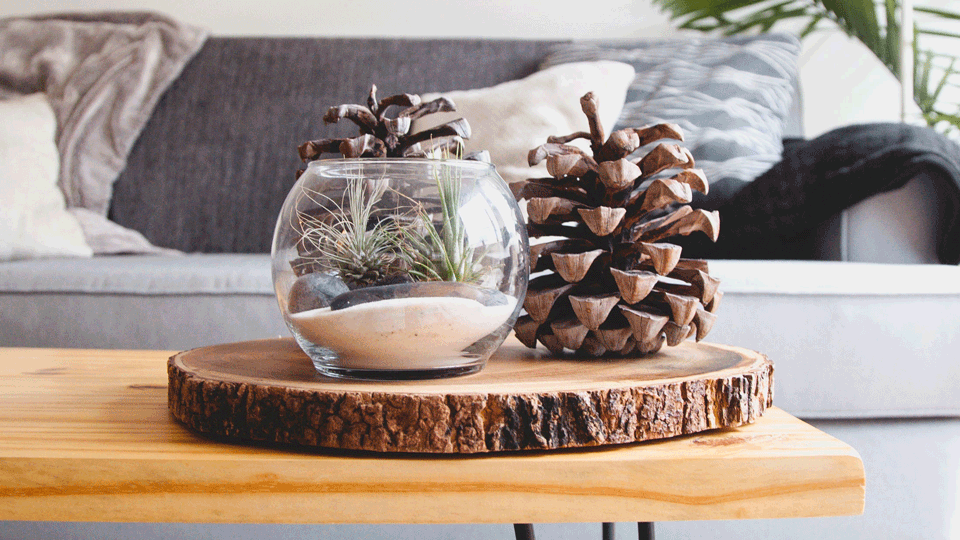
So what is Biophilic Design? Let’s start with what it’s not... which is a little pot plant or a zen garden box on your desk. Although both of those are cute ideas! Biophilic Design, simply put, is all about our innate need to connect with nature, and the incorporation of nature into our indoor environments, from the foundations up. The word ‘biophilia’ comes from the Greek word ‘philia’ meaning ‘love of’, and ‘bio’ meaning ‘life’. The love of life and living things.
Biophilic Design focuses on creating a calming space, with both a seen and unseen connection with nature which improves wellbeing, health and productivity.
It’s a conversation between outdoors and indoors, and it creates a harmonising balance between the natural world and the built environment by incorporating vegetation, natural light, textures and materials in such a way that all these factors impact us positively.
Biophilic design – the incorporation of nature into ‘un-natural’ spaces – was trending long before Covid got its nasty mitts on us, but lockdowns, distancing, isolation and quarantining have all worked together to accelerate the trend, and heightened our need for connection with nature.
Why do we Need Biophilic Design? We are urban dwellers (90% of our time is spent indoors!), and every day we are impacted by crime, noise, traffic, stress, media input, pollution, technology. “The slings and arrows of outrageous fortune”, as Shakespeare once said. These are the urban viruses, if you like, that infect us, causing depression, anxiety, rage, absenteeism, sick building syndrome and burnout. In an urban environment, we get disconnected from nature, and it can make us sick.
The How. Biophilic Design includes both indirect and direct attributes. Direct Biophilic Design includes physical or living aspects of nature – like a living plant wall, wooden floors and other structures, natural light, the free flow of air, indoor trees and water, for example. Here’s an example of Indirect Biophilic Design: a person lives in an inner city apartment and decorates the walls with photographs and paintings of the ocean, as a connection to the natural world. Living next to the sea, with the opportunity to have direct interaction with sand, shells, and the sight and sound of the waves, engages all the senses and results in positive feelings. It makes us happy. However. The beautiful representation of those elements through imagery may allow us city dwellers to experience even more emotional or intellectual satisfaction. Which makes us very happy.
Starting to make sense? Can you identify Direct or Indirect Biophilic elements in your living spaces that allow you to connect with nature?
Although we’re not in the business of Direct Biophilic Design, we can certainly point you in the right direction - people and organisations who are Direct Biophilic Design specialists. For a start, if you’re envisaging a new build that will be a living, breathing ‘organism’, go Biophilic from the get-go with guidance from The Green Building Council of SA. Then there’s Melanie Ewing, CEO of Chapters Interiors, a Biophilic Design expert, who teaches, trains and advises.
Biophilic Design 101.
1.Fresh Air. Open those doors and windows and let the breeze filter into your home, your mind and your heart. Listen to the sounds of birds, wind, rain. Breathing fresh air will improve your immune system function and your mood.
2.Maximise Natural Light. This is the source of our sunshine vitamin – Vitamin D. Vital to the regulation of calcium, the lowering of blood pressure and maintenance of general health. Reposition any furniture, blinds or curtains that block the full potential of sunlight.
3.Incorporate Plants. Plants are not just lovely to look at. They are natural air purifiers and mood boosters – but you need more than one little love palm for this!
- Use Natural Materials. Bamboo, cork, recycled timber, wicker, linen, cotton, coir and jute. But be mindful of the source. Choose sustainable. Do your homework. Be a conscious consumer.
5.Embrace the Shapes, Colours and Sounds of Nature. Green is one of the most relaxing hues on the colour wheel, and will restore energy and calm the mind. But nature is bursting with colours of all kinds. What about changing the paint colour of a feature wall to harmonise with the changing seasons? Nature loves pattern, but she also loves small imperfections. Curves, soft edges, zigzags, contrasting straight lines, right angles and ‘wibbly’ lines. Supporting pillars in the shape of trees. Get the natural feel and coziness of organic materials. Botanical prints and big floral wallpapers. Wall art. Download an app that plays water sounds, or place aromatically fragranced aromatherapy air diffusers in your living room.
Italtile and Indirect Biophilic Design.
Indirect Biophilic Design is Our Thing. It’s the design space in which we love to play.
Take a walk through our green woods. Quality wood-look porcelain tiles are a wonderful way to get indirectly biophilic on walls and floors. The Italtile range is extensive and exquisite, plus every item is sustainably manufactured and eco-chic to the bone. Our collection of looks mimics recycled timber, raw-hewn timber, bleached beach-house wood, among many other styles. Local and imported. All green.
Perhaps our most beautiful range is our newest arrival: Exence by Atlas Concorde. A magnificent interpretation of noble Italian oak in all its honeyed, knotted glory. Only the hand of a master can capture the luminosity of the heart of oak. The Atlas Concorde designers have achieved that rare golden glow, with an authentic wood patina across 48 faces. This means there are 48 individual graphic representations of hand-finished timber, each one subtly different from the other, for a truly authentic look. Use the range inside and outside, to create a beautiful dialogue between the spaces.
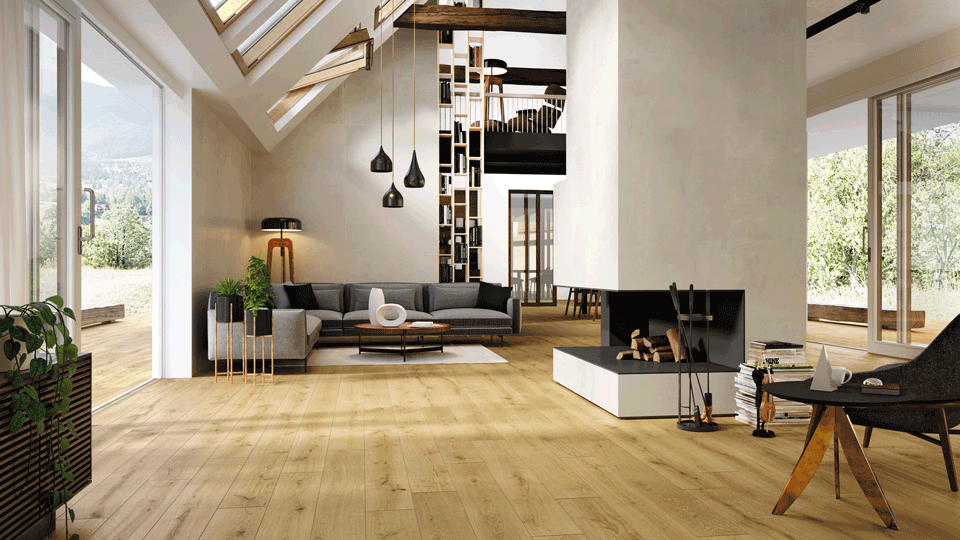
ColorArt by Ceramica Sant’Agostino is a homage to the effect of time on timber and celebrates the ‘lived-in’ life. The range is an evocative remastering of pre-loved wood in a variety of beautifully worn elemental themes: bone, light, desert and carbon. Through incredible digital technology, ColorArt reimagines the look and feel of time-worn wood that still carries the mark of the artisan’s craft, and tells the stories of a life well-lived before you added your chapter. To heighten the authenticity of ‘gathered wood’, each colourway offers 120 faces. That’s 120 entirely different, individual graphic representations of reclaimed wood... and the result is utterly breathtaking.
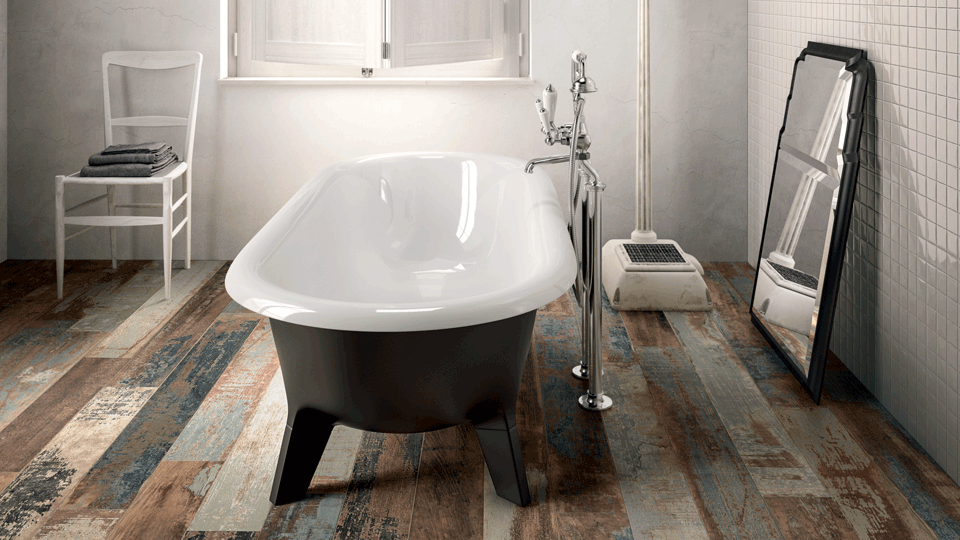
Ocean-inspired sanware. Our Swiss friends over at Laufen are mad about collabs with award-winning designers, architects and artists. Their collaboration with multi-award winning design couple Ludovica+Roberta Palomba gave birth to Palomba - a range of eco-conscious sanware exclusive to Italtile. The collection was inspired by the rounded pebbles and indentations in coastal rock created by the continuous movement of the sea. Trust us... just one look will make you happy. And that’s the key feeling that bubbles up with Biophilic Design.
Rock the Biophilic macro trend with our stones. Dating back to our pre-historic days, it’s quite clear we’ve always viewed stone with respect. We climbed it to get the best prospect out over the plains where our meals roamed. We painted our hunting memories on it. Carved our spiritual feelings into it. Used chips of it to make instruments. Constructed our monuments out of it. It has always been a valuable, natural building block, from Stonehenge, to the Pyramids, to Medieval castles and 18th century stone farmhouses, to our modern skyscrapers.
Our 21st century stone-look tile portfolio evokes the everlasting nature of stone’s beauty, strength and warmth. In all its many exquisite colours, variances and veining.
Sustainable tile masters Atlas Concorde are past masters at the reimagining of stone into awe-inspiring porcelain tiles, and their latest creation, Aix, is no exception. The collection, an Italtile exclusive, recalls the irregular, uneven aesthetic of stone floors criss-crossed with grooves from the chisels of artisans, and the stains and wear of foot traffic over centuries. The Aix collection is the perfect synthesis of architecture and nature. It pays homage to the warmer-hued stone which is a feature of old villas in the southern mediterranean and the 18th century French farmhouses in Provence, as well as the cooler-toned stone of the gracious old residences of central and northern Europe and Great Britain. Aix will give your inside and outdoor floors and walls that living stone feel, whether you choose cooler Fumée or Cendre, or the warmer Beige or Blanc.
Earthy screed looks. Cement screeds may be man-made, but they are, essentially, compilations of natural elements, and when mixed, retain those beautifully earthy variances. We’re big fans of this forever-on-trend look, and in particular, our Proudly South African Magnum screed-look tile range from local sustainable tile pioneers Gryphon (part of the group of Ceramic Industries factories). You’ll love Magnum’s beautifully earthy tones, smoky warmth and naturally varianced looks. You’ll also appreciate their eco cred.
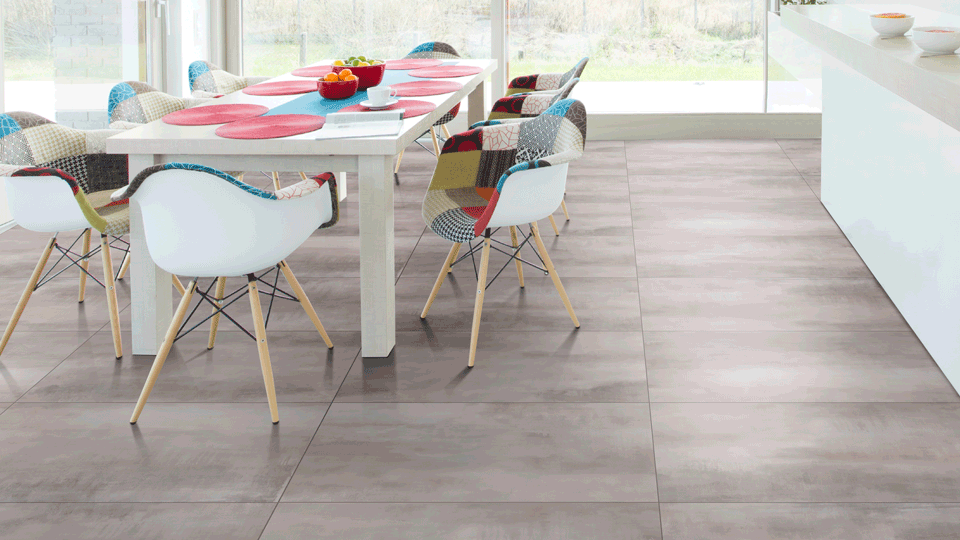
Gryphon CEO Lance Foxcroft says: “One of our primary goals at Ceramic Industries is to reduce factory energy consumption by 20 to 30%”. He is understandably proud of their state-of-the-art EKO kilns, designed to reuse waste energy, which minimises emissions and gas consumption.
Another green practice that they’ve pioneered is the reformulation of clay and glazes to lower their melting point. The result? Kilns run at lower temperatures to reduce energy consumption, without reducing the strength and durability of their tiles. Another innovation at Gryphon is the introduction of Laser Guided Vehicles and Automated Guided Vehicles on the factory floors and in their warehouses. These electrically powered vehicles replace diesel forklifts, to reduce emissions and drastically cut energy consumption.
That’s a lot of awesome green cred! Oh, and did we mention that they’re currently on promo? The Magnum trifecta: Inner Beauty, Biophilia and Budget-beating.
Get Biophilic in your Bathroom. Oh, the column inches we could write about bathroom biophilia... marble looks, natural cladding, stone-look slabs, Quarrycast stone-infused bath material, aqua-toned mosaics, the list is endless. But for now we’ll just concentrate on one piece of bathroom furniture that channels some rather gorgeous natural elements. The Soria Cabinet. With an authentic matt oak look finish on the shelf, and a tint of cherry in the brown base unit.
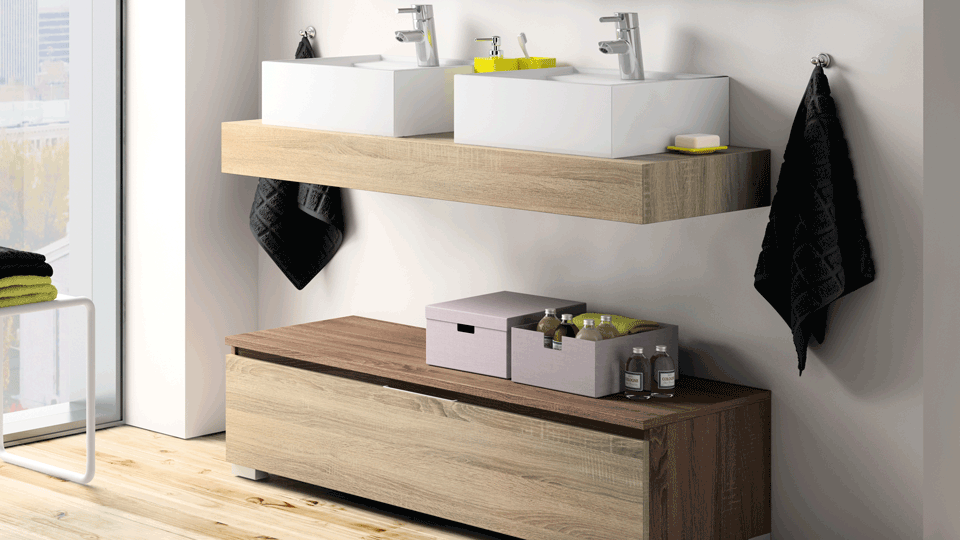
Driftwood vibes. Nothing says “my beachy life” quite like a piece of driftwood. Reverently harvested from the beach at low tide, then placed somewhere prominent in your living room to tell its mysterious tales of sea adventures, while you remember the moment of beach sand, and grasses blowing in the ocean breeze. But let’s not forget, the next best thing to living by the sea, is creating instant sea vibes with Indirect Biophilic Design. Our driftwood-inspired Beachwood Hexagonal Inkjet Enviro-Glass Mosaics are made of 100% recycled glass, and offer you two beautiful biophilic pathways to happiness: the hexagonal shapes are reminiscent of honeycomb, and the driftwood looks speak of worn ship timber that has been washed smooth and silky after decades of being tossed by waves and bleached by the sun. Happiness? You bet!
The road to a more biophilic future is fun, exciting and highly creative. And in just your first few steps you will feel the benefits of improved health, well-being and productivity. The positive impact of your journey to more natural connections will be spectacular. The key word? You’ve got it – happiness.
So, what elements will you apply to your home? Whatever you choose, we can’t wait to help you create a lifelong connection to nature. Here’s to your biophilic happy-ever-afters.
Ciao!














































































































































































































































































Validate your login